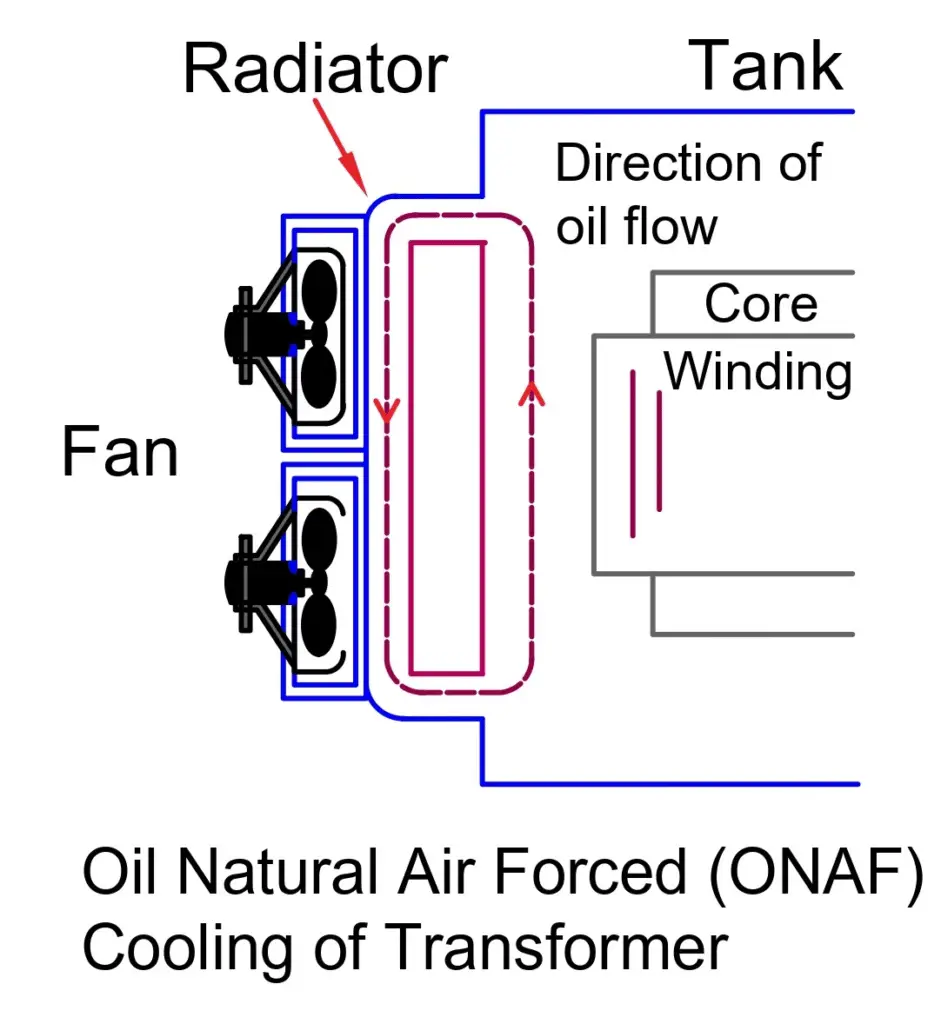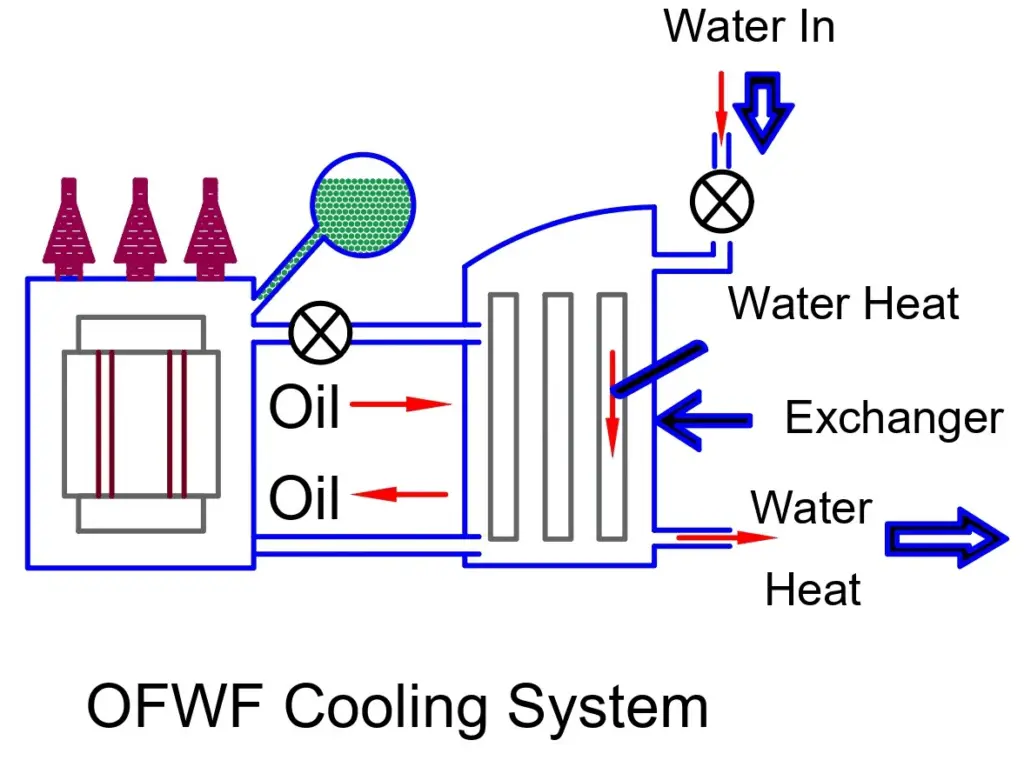The AN, ONAN, ONAF, and OFAF cooling methods of the transformer are very important for transformer cooling. The cooling of the transformer brings the temperature down when the transformer operates at load and enhances the useful life of the transformer.
A transformer transfers power from the primary to the secondary side by stepping up or down the voltage. Heat loss occurs in the transformer core and winding during the process.
Related Post: Step-up & a Step-down Transformer
The heat loss caused by the flow of current in the winding is called copper loss, and the heat loss caused by magnetization of the CRGO steel core is called core loss. The core and winding life depends on the degree of cooling. If heat is not taken away from the oil and the temperature of the oil rises above the flash point of the oil, the transformer is apt to fail. Also, the winding insulation is prone to fail if heat is not removed.
Related Post: Transformer CRGO Core-Construction, Working & Losses
The useful life of an oil-filled transformer is greatly influenced by temperature rise. The insulation property deteriorates with temperature rise. The transformer operating above 10 degrees centigrade above the rated temperature reduces the transformer’s life by 57%.
ANSI and IEEE require the cooling class of each transformer to be written on its nameplate.
The following cooling system types are used in oil-filled transformers depending on the heat transfer process.
Cooling Methods of Transformer
The following cooling methods are widely used in transformers.
- ONAN (Oil Natural Air Natural)
- ONAF (Oil Natural Air Forced)
- OFAF (Oil Forced Air Forced)
- AN cooling
Now, we discuss each cooling method of the transformer in detail.
ONAN (Oil Natural Air Natural)
ONAN stands for Oil Natural Air Natural Cooling. The schematic diagram of the ONAN cooling system is given below.

The heat produced in the winding and core is transferred to the transformer oil by conduction. The heated oil, being lighter, moves up on the transformer tank, and the cool oil takes the place of the hot oil. Thus, by convection process, the oil circulates from the bottom to the top of the tank. The ambient temperature then takes the heat away. The efficiency of the cooling system depends on the temperature of the ambient temperature and the surface area of the transformer. To increase the surface area of the transformer, a radiator is fitted on the transformer tank. ONAN cooling method is best suited for small-rating oil-filled transformers up to 5 MVA.
ONAF (Oil Natural Air Forced)
ONAF stands for Oil Natural Air Forced cooling. The schematic diagram of ONAF is given below.

The transformer above 5 MVA rating ONAN cooling system is inadequate, and the ONAF system is used to reject the heat developed in the transformer. Similar to ONAN, the oil circulates by convection process. However, the force cooling to the transformer tank and the radiator surface is provided by external cooling fans. Fans are mounted below the radiator.
The fans are started according to oil temperature to save energy. When the oil temperature reaches 80° C, the fans are started, and when the temperature lowers to 70° the fans stop.
The ONAF cooling system can be used for the transformer rating from 5 MVA to 60 MVA.
OFAF (Oil Forced Air Forced)
OFAF stands for Oil Forced Air Forced cooling. For transformers above 60 MVA rating, the ONAF cooling system is inadequate, and the OFAF cooling system is used. In a large rating transformer, more heat is generated, and the convection circulation of transformer oil is replaced with forced circulation. The oil pump is fitted in an OFAF cooling system; the pump forces the oil to circulate, and the heat transferred to the radiator is radiated in the ambient by force cooling of the transformer radiator.
OFWF (Oil Forced Water Forced)
OFWF stands for Oil Forced Water Forced. In large rating transformers, final heat transfer through the air is inadequate, and the OFWF cooling method is used. The heated oil is forced to pass through the heat exchanger. In the heat exchanger, the oil flows in the tubes, and cooling water flows in a shell. The schematic diagram of the OFWF cooling system is given below.

The water takes away the heat of the oil, and thus the oil temperature decreases. For effective working of the heat exchanger, the oil and water flow in opposite directions in order to have maximum efficiency of the heat exchanger.
AN cooling Method
In a dry-type transformer, the air is only the medium to take away the heat generated in the transformer. The fans are used to force the cooling of the winding and core of the transformer. This type of cooling is called AN (Air Natural).
This is all about the cooling methods of the transformer.
Read Next: